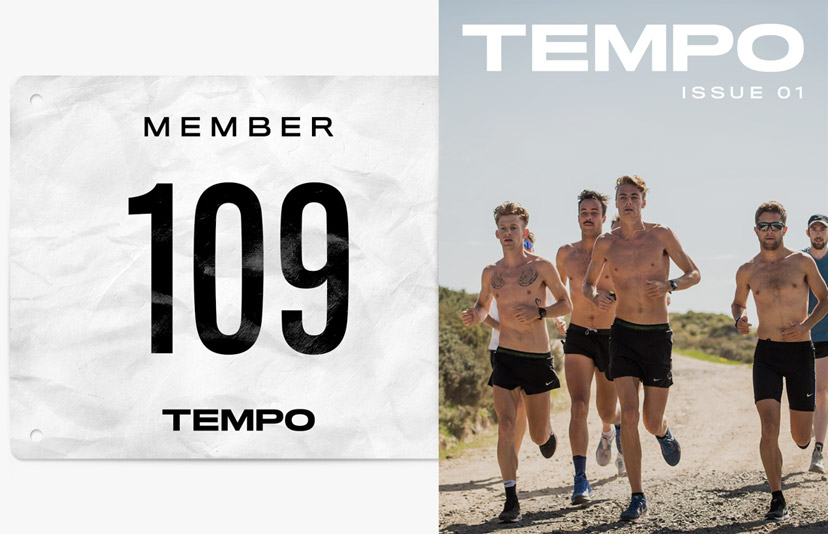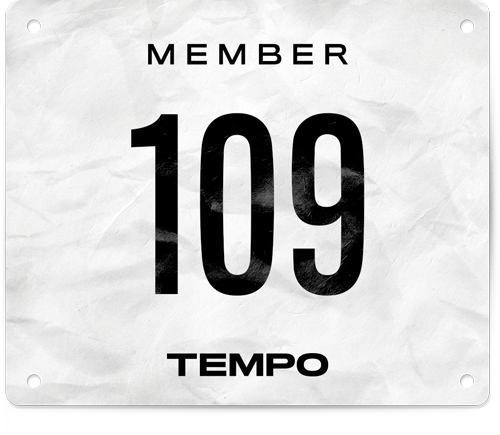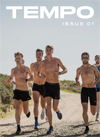Performance
The Making of Sally McRae
Redefining what hard work looks like
Nike Mountain runner Sally McRae sits across from me looking almost too Californian to be real. Perfectly tanned in mid-November, a blonde braid hanging at her shoulder, she’ll occasionally finish a sentence by really leaning into the ‘u’ in dude. We’re chatting at an outdoor mall in Huntington Beach, separated from the ocean by about 200 meters and a bustling ribbon of the Pacific Coast Highway.
Sally is one of the growing number of celebrities in the trail running world. She operates on a steady diet of 50 and 100 mile races, something not for the faint of heart. Routinely, her days start at 3:30 AM, and she’s made a habit of spending as much time on the trails and in the mountains as possible. California on the other hand has a reputation for being somewhat soft. It’s the punchline to a joke about a cushy, sun bleached lifestyle. The residents? Almost criminally laid back. The pace? A little too sleepy for me, but thank you for asking.
This idea of California Softness rattles around my skull as we settle into our interview. It’s something I can’t help but ask athletes that live and train in Southern California: don’t you think that your training, for body and mind, would benefit from living somewhere considered a little more…tough? Within five minutes of talking I decide to nix this narrative altogether.
“I’ve always worked,” she says. “I’ve worked since I was seven, which sounds crazy, but that’s the way I got to spend time with my dad. It was real work. I was helping lay linoleum tiles, I learned how to put together ceiling fans and toilet seats. Manual labor. Physically, I was very strong. And I loved that.”
I think of my soft, un-calloused hands, pink as they day I was born: California. Not tough. And then I think about Sally, a world renown trail runner who has made a career out of scaling mountains in 30, 50 or even 100 mile increments: tough.
At the age of 39, Sally calls herself an “old athlete.” She recognizes that in any sport, maybe aside from golf or curling, that this is generally considered the twilight of an elite athlete’s career. But a glance down her racing schedule over the last two years—one that’s littered with races ranging from 50k to 135 miles, spanning from her own backyard in Newport Beach to Italy, New Zealand, and China—it’s hard to find any aspect of it fit for someone who is “old.”
If you’ve been following ultrarunning for a while, you may know Sally. Despite not running her first ultra until the age of 30, and not turning professional for three years after that, she has earned the respect of fans, athletes, and brands alike. Six years later, Sally’s professional life has become a type of machine. It’s one that’s not just focused on running at a high level, but also leveraging her enormous personality.
Spend any amount of time with Sally and this is easy to understand. I have known her for all of five minutes before I feel like she is my biggest fan. At one moment she is speaking earnestly about her accomplishments and failures, and in the next she is asking about my life while making deep, sincere eye contact. Even through an often impersonal outlet like social media, she exudes this level of personability, which her followers, and subsequently brands, love.
I manage to catch her in a three day stretch when she’s actually at home in Newport Beach. I have been squeezed in between a meeting with a potential sponsor out-of-state and work with Nike that will take her to the Bay Area.
The running and the personality are one part of the equation to her success. Not many athletes have been able to take a sport like running--where horror stories of athletes scraping by on miserly shoe contracts are a dime a dozen--and turn it into something truly sustainable. And as we talk it becomes clear that the other part of the Sally equation is a driven, tremendously savvy, business woman. For Sally, the roots of this come from difficult lessons learned from mom and dad, and an early life spent dedicated to soccer.
“I was always the fastest on the team,” she said. “I scored the most goals, and that pretty much continued through junior high and high school. I was just good at it and I loved it.”
Eventually, recruiting letters from schools like Dartmouth, Stanford, and Berkeley started filtering in. The excitement that these opportunities presented, however, was short lived. When Sally was 14, her mom was diagnosed with breast cancer. She bravely battled the disease for two long years before things finally began to deteriorate.
“I was 16 and I remember coming home from club nationals. When I left it was a Friday and she was walking. When I came back it was a Sunday and she was in a wheelchair,” she recalled. “I was still wearing my uniform. I dropped my bag on the ground and I just started weeping.”
Her mom died four weeks after Sally’s 17th birthday. It was a rapid descent that left Sally reeling for answers. In her mom, she had a person that was “wildly encouraging. I had a mom who believed I could go and do anything.” Her father on the other hand, was emotionally and physically abusive. With her mom gone, the war of two worlds she described growing up was now a one sided battle.
“He spent most of my childhood really crushing me,” she remembers. “I wanted so badly for my dad to be proud of me and for my dad to love me. Which he never did.”
Sally took the best of both sentiments with her. From her mother, she took confidence and a belief that big dreams were essential to a life well lived. From her father, she took a chip on the shoulder. One that she still carries with her today.
“He’s not a part of my life anymore, sadly. I don’t have hate for him, I’m not bitter towards him. I have forgiven him,” she said. “But my drive comes from a place of sadness, too. I want my dad to be proud of me, I want my dad to love me, I want him to see that I’m doing these great things.”
The idea of greatness is something we come back to a lot, and it’s something she strived for in every aspect of her life, starting on the soccer field. College came next, where she matriculated to Biola University and spent four years playing soccer. After that it was a slew of jobs that took her across the world, with stints in South Africa and Washington DC.
Eventually, she settled down back in her hometown in Southern California.
“During that time I decided I was going to start running to stay in shape,” she said. “This was the one year where I wasn’t training twice a day. I had been training at a high level for so long, so I needed something”.
It wasn’t long before she decided she wanted to try her hand at a marathon.
“He’s not a part of my life anymore, sadly. I don’t have hate for him, I’m not bitter towards him. I have forgiven him.
But my drive comes from a place of sadness, too. I want my dad to be proud of me, I want my dad to love me, I want him to see that I’m doing these great things.”
SALLY MCRAE
As she tells me this, I start to see the proverbial gym class mile that serves as the springboard for many running careers: a flurry of elbows and knees as the oddball skinny kid demoralizes the jocks by a full minute. This was her awakening. Local Kid Makes Good in Marathon Debut! Right? Wrong. Four hours and twenty six minutes after the gun sounded, Sally finished the 2003 LA Marathon in 3,729th place.
“It was terrible,” she admitted. “Leading up to this I had never run a 5k, 10k, anything. I had no idea what I was doing. When I finished, I had bloody feet and blisters, I could barely walk for two days.” She paused for a moment before smiling and punctuating the sentence, “but I loved it.”
She flatly said that her first bout with the marathon “sucked,” but she acknowledged it was largely due to being green. Shortly after the race, she learned about the qualifying process for the Boston Marathon. “It’s this thing that everyone was saying was super hard to get into,” she said. But for Sally, who had spent the last decade of her life in a goal oriented, athletic environment, this became her next challenge.
Training started immediately. She bought a couple books and remembers Advanced Marathoning by Pete Pfitzinger as the most formative one. In the back of the 300-page training manual, Pfitzinger lays out detailed day-to-day plans for a good marathon build up. Sally followed the plan to a T, “without any consideration for myself or whether or not I was ready for these workouts.”
A little more than a year later, she ran her second marathon and qualified for Boston, running 3:30:35.
“The desire to train never left me. I never said ‘I’m a weekend warrior now and I’m going to run a marathon.’ I was like ‘if I’m going to do it, I’m going to be in kickass shape and I’m going to do it right.’”
Despite an auspicious start to her running career, it remained a passtime. Life carried on as usual: a move to the east coast, the birth of her first child (a daughter), a marathon 6-months postpartum (Marine Corps), a move back home to Southern California, the start of her own business as a fitness trainer, and another kid (a son).
We’re now comfortably settled into the chapter where things seem to slow down. The routine of an adult life taking shape, its foundation set on running a successful business and raising children.
It was somewhere around 2009 that ultra running reared its head. Like any good entrepreneur, Sally maintained a number of subscriptions to various health magazines to keep up with what was going on in her field. One of those magazines happened to be Runner’s World. Flipping through the pages one day she found a short recap of a 100-mile race.
Most people would read that article and say “huh” before flipping to the next page and forgetting about it entirely. Not Sally.
“I read that article and thought, ‘dude that is insane. People can run 100 miles. That’s amazing. I want to try it.’”
The article left her with one nagging question: “what is it about these people that they can do something like that?” Seeking answers, she went as far as finding prominent ultra-runners on Facebook, then sending them messages asking for pointers. It was through these Facebook messages that she found out about the American River 50 Miler.
So she signed up. With two small children under the age of three, she recalled 80% of her training being done on a treadmill, either early in the morning or late at night. Two months before the race, she learned that the top three runners at American River get automatic entry to the fabled Western States Endurance Run. Sally now had her white whale.
The race itself did not go as planned. By mile 31 she was in fourth place, but she had neglected to eat anything (“I had no idea what I was doing”) and was forced to stop from “gnarly cramps.” The kindness of another runner got her to the finish line, sharing food and water along the final stretch. McRae finished as the eighth overall woman in 7 hours 40 minutes.
Thus began her trial by fire:
A month later, she ran the PCT 50 Miler. A week after that, Bishop High Sierras Ultra 50 Miler. Two months later, the Bulldog Ultra 50k. Two weeks after that, the Chimera 100k. Over the course of six months Sally raced five ultras, tallying almost 200 miles, won two of them, and finished in the top five in all but her first.
I wondered if any of this was truly fun for her. Going from running recreationally to competitively traversing huge distances must be a shock to the system. Was this her idea of a good time? She sits with that thought for a while before offering: “It takes a certain mindset to want to just go out and suffer.”
She continued competing, but big injuries took chunks of her 2011 and 2012 season. It wasn’t until 2013 Sally had her breakthrough. She made it a goal to only sign up for races she deemed competitive, with the her eyes set on challenging the best.
“I could go out and sandbag these races,” she said. “But I wanted to race amazing athletes.”
The results varied, but trended more positive than negative, and she developed a reputation for being one of the few people on or within spitting distance of the podium that didn’t have a sponsor. But, at the age of 34, after her final race of 2013—a 13th place finish at The North Face 50 Mile—she was approached by Nike.
Her clout in the running world had grown. She had success in big races, and she had also been featured on a handful of running podcasts, as well as some video shorts by the Southern California filmmaker, Billy Yang. Despite this, she allowed self-doubt to creep in.
“I’m not good enough,” she remembered thinking. “I believed that. And I knew how the community worked. I hadn’t won any big races. I hadn’t done anything ‘great.’ Who was I? I was going to get ripped to shreds. So signing with Nike was scary for me. And I thought ‘now I need to go and do something really great.’”
For many, greatness can be intimidating. For Sally, though, introspection and lessons learned early on prepared her for her next task. “Growing up, when I really considered who I was, it was just in me. I believed that for whatever reason, I could do something great one day,” she said.
A few months after signing with Nike she got her golden ticket to Western States after placing 2nd in the 2014 Sean O’Brien 50 Mile. Something great indeed.
From there, as Sally tells it, things snowballed. A tenth place finish at that year’s Western States 100 would cement her place in the trail running community. She embraced becoming a professional athlete and took advantage of the newfound opportunities that accompanied it.
"I hadn’t won any big races. I hadn’t done anything ‘great.’ Who was I? I was going to get ripped to shreds. So signing with Nike was scary for me. And I thought ‘now I need to go and do something really great.’”
SALLY MCRAE
The years that followed have been almost incomprehensibly busy. Sally began racing internationally, went back to Western States twice, maintained her own business while branching out to different facets as a consultant, producer, and brand ambassador. She’s now not only paid to run, but paid to speak and attend. Her schedule is so full she says it “gives my husband a headache.” She recognizes, though, that this will stop eventually. Its inevitable end is why she has committed to doing it, and doing it right, for as long as the opportunity is there. Here, we come back to her mother.
“Her death has impacted and shaped who I am. I am running up mountains all over the world at the age of 39. That’s the same age my mom was told she was going to die,” she says. “Because of her death I live a better life. I live with great intention and purpose and this undying passion to help others believe that they’re great, that whatever they do matters and has purpose no matter what it is.”
Over the course of our two hour conversation, Sally talked candidly about a lot of things that don’t seem at all connected. She smiled as she spoke, even on topics like death and estrangement. Slowly, the narrative of her life started to take shape in my mind. There was never an impasse or fork in the road for her. On one level, someone might see moments in their life where a decision had a catastrophic or monumental impact. Sally, however, is on a higher plane, an alchemist of sorts: she would have turned any old turd into gold.
I ask her if she sees her life as containing two chapters. One chapter that existed before she became a professional runner that seemed, perhaps, a little more settled. And a second chapter now, that spans the globe, and at the age of 39 is probably a lot more hectic than life in her 20s.
“I would have never dreamed that this is what I would be doing, and I think that excites me more than anything,” she admits. “So often it’s easy to get so set on achieving one goal. And when it doesn’t happen the way you want, to be so crushed that you feel like you wasted your life or that your life sucks.
“What I’ve realized is that some of my deepest hurts and pains and challenges and my greatest failures, have actually been the starting point for something great and new. If I go out there and beat who Sally was yesterday, then I’ve run a great race.”


